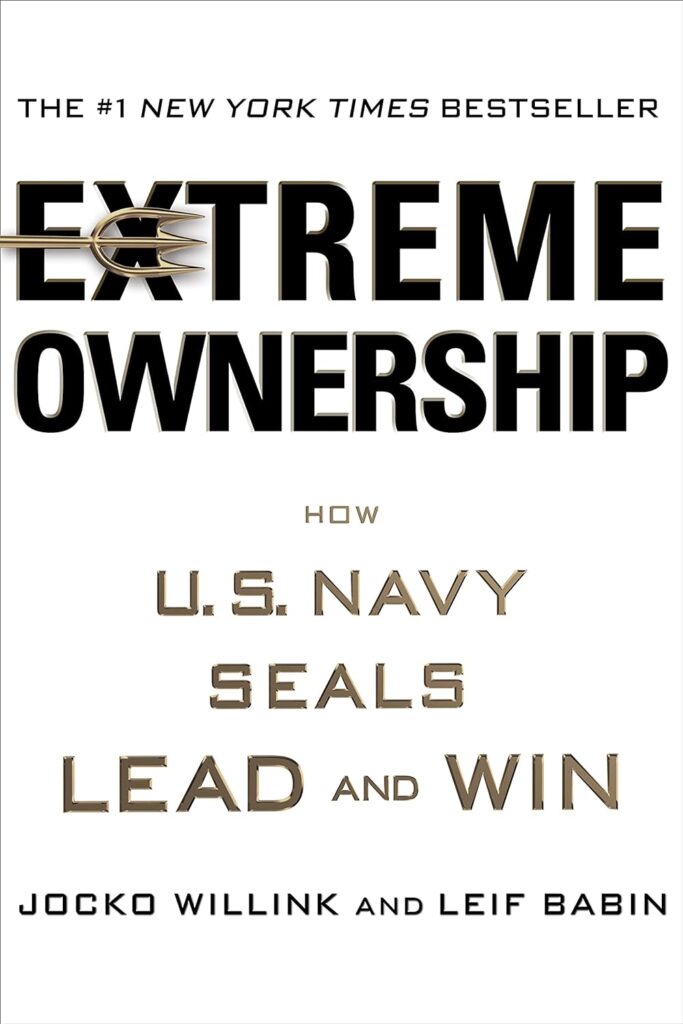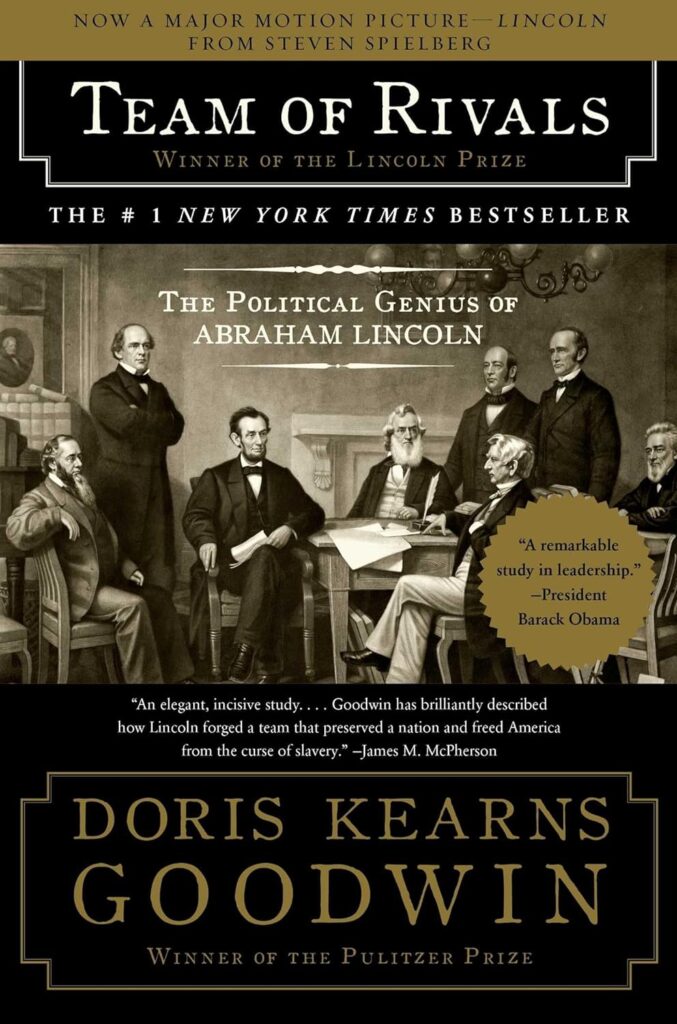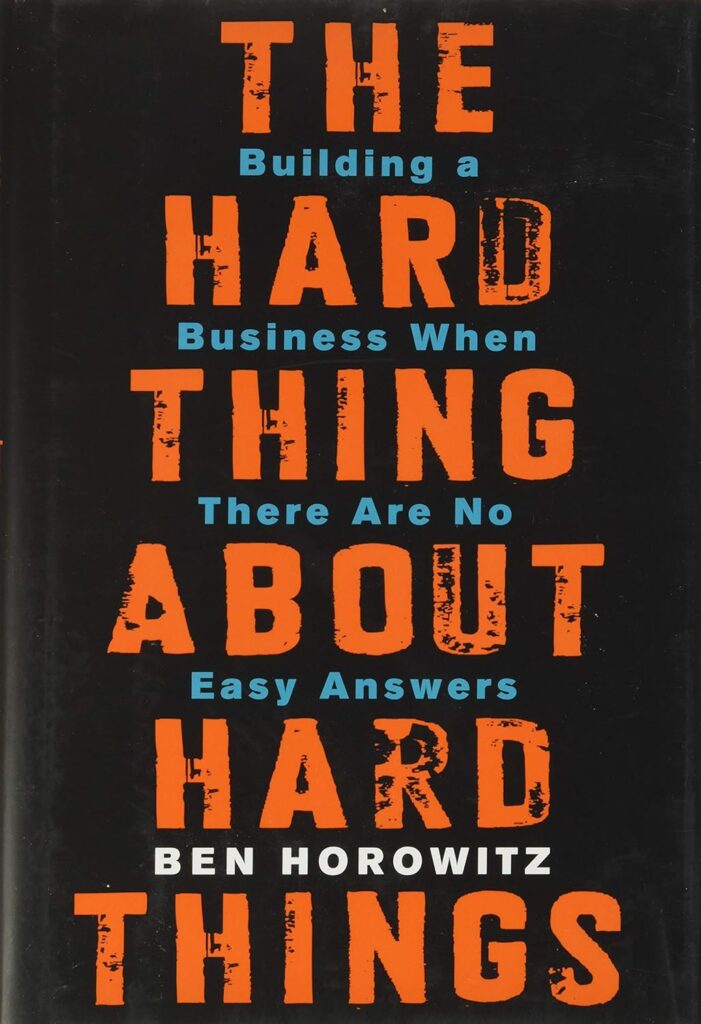Summary: In this article, I came up with a list of twenty leadership books that can transform your approach to management and inspire personal growth. The three that came on top of my list are:
- Start with Why by Simon Sinek
- Extreme Ownership by Jocko Willink and Leif Babin
- Dare to Lead by Brené Brown
Leadership books offer valuable insights into management, personal growth, and how to work well with teams, making them essential for anyone wanting to enhance their leadership skills. They provide practical strategies, real-life examples, and inspiration from successful leaders, helping you tackle challenges and motivate your team. By diving into these books, you can sharpen your communication, decision-making, and emotional intelligence while also fostering personal growth and adaptability in a fast-changing world. Investing in leadership literature empowers you to lead more effectively and make a positive impact in your organization or community.
TOP 20: Best Leadership Books
- Start with Why by Simon Sinek
- Extreme Ownership by Jocko Willink and Leif Babin
- Dare to Lead by Brené Brown
- Leaders Eat Last by Simon Sinek
- Good to Great by Jim Collins
- The 21 Irrefutable Laws of Leadership by John C. Maxwell
- The Five Dysfunctions of a Team by Patrick Lencioni
- Radical Candor by Kim Scott
- The Innovator’s Dilemma by Clayton Christensen
- Drive: The Surprising Truth About What Motivates Us by Daniel H. Pink
- The Lean Startup by Eric Ries
- Tribes: We Need You to Lead Us by Seth Godin
- Team of Rivals: The Political Genius of Abraham Lincoln by Doris Kearns Goodwin
- Leadershift by John C. Maxwell
- The Culture Code by Daniel Coyle
- Principles: Life and Work by Ray Dalio
- The Hard Thing About Hard Things by Ben Horowitz
- Measure What Matters by John Doerr
- Leadership and Self-Deception by The Arbinger Institute
- Legacy by James Kerr
1. Start with Why
- Author: Simon Sinek
- About: Explores the importance of understanding your “why” to inspire others and drive action.
- Style of writing: Engaging and accessible, with relatable examples.
- Length: Approximately 50,000 words.
- Year written: 2009
- Emotional impact: Leaves a lasting impression on how purpose influences leadership.
- Difficulty level: Easy to moderate.
- Why read it: To understand the significance of purpose in effective leadership.
2. Extreme Ownership
- Author: Jocko Willink and Leif Babin
- About: Discusses the principle of taking full responsibility in leadership, drawing from military experiences.
- Style of writing: Direct and practical, with compelling anecdotes.
- Length: Approximately 80,000 words.
- Year written: 2015
- Emotional impact: Inspires accountability and personal growth.
- Difficulty level: Moderate.
- Why read it: To learn about the importance of ownership in leadership.
3. Dare to Lead
- Author: Brené Brown
- About: Examines how vulnerability and courage can redefine leadership.
- Style of writing: Conversational and relatable, blending research with personal stories.
- Length: Approximately 90,000 words.
- Year written: 2018
- Emotional impact: Encourages deep reflection on personal values and leadership styles.
- Difficulty level: Easy to moderate.
- Why read it: To embrace vulnerability as a strength in leadership.
4. Leaders Eat Last
- Author: Simon Sinek
- About: Focuses on creating a culture of trust and collaboration within teams.
- Style of writing: Insightful and engaging, with real-life examples.
- Length: Approximately 80,000 words.
- Year written: 2014
- Emotional impact: Encourages a sense of belonging and loyalty in teams.
- Difficulty level: Easy.
- Why read it: To learn how to foster a supportive team environment.
5. Good to Great
- Author: Jim Collins
- About: Investigates what differentiates great companies from mediocre ones.
- Style of writing: Analytical and research-based, with clear conclusions.
- Length: Approximately 90,000 words.
- Year written: 2001
- Emotional impact: Inspires ambition and strategic thinking.
- Difficulty level: Moderate.
- Why read it: To understand the principles behind sustained business success.
6. The 21 Irrefutable Laws of Leadership
- Author: John C. Maxwell
- About: Outlines essential laws of leadership that every leader should follow.
- Style of writing: Clear and straightforward, with practical examples.
- Length: Approximately 70,000 words.
- Year written: 1998
- Emotional impact: Provides a sense of empowerment and direction.
- Difficulty level: Easy.
- Why read it: To grasp fundamental leadership principles.
7. The Five Dysfunctions of a Team
- Author: Patrick Lencioni
- About: Identifies common pitfalls that teams face and how to overcome them.
- Style of writing: Narrative-driven, with a fictional story illustrating the concepts.
- Length: Approximately 50,000 words.
- Year written: 2002
- Emotional impact: Encourages reflection on teamwork dynamics.
- Difficulty level: Easy.
- Why read it: To improve team collaboration and performance.
8. Radical Candor
- Author: Kim Scott
- About: Advocates for open and honest communication in the workplace.
- Style of writing: Direct and engaging, with practical advice.
- Length: Approximately 80,000 words.
- Year written: 2017
- Emotional impact: Inspires courage to have difficult conversations.
- Difficulty level: Moderate.
- Why read it: To learn how to communicate effectively and build trust.
9. The Innovator’s Dilemma
- Author: Clayton Christensen
- About: Examines why successful companies fail to innovate and adapt.
- Style of writing: Analytical and well-researched, with case studies.
- Length: Approximately 90,000 words.
- Year written: 1997
- Emotional impact: Provokes critical thinking about innovation and change.
- Difficulty level: Moderate to advanced.
- Why read it: To understand the challenges of innovation in business.
10. Drive: The Surprising Truth About What Motivates Us
- Author: Daniel H. Pink
- About: Explores the science of motivation and how it applies to the workplace.
- Style of writing: Engaging and accessible, with research-backed insights.
- Length: Approximately 80,000 words.
- Year written: 2009
- Emotional impact: Challenges traditional views on motivation.
- Difficulty level: Easy to moderate.
- Why read it: To learn about intrinsic motivation and its importance in leadership.
11. The Lean Startup
- Author: Eric Ries
- About: Introduces a methodology for developing businesses and products.
- Style of writing: Practical and straightforward, with actionable steps.
- Length: Approximately 70,000 words.
- Year written: 2011
- Emotional impact: Empowers entrepreneurs to innovate efficiently.
- Difficulty level: Moderate.
- Why read it: To adopt a flexible approach to building successful startups.
12. Tribes: We Need You to Lead Us
- Author: Seth Godin
- About: Discusses the importance of leadership in creating and nurturing communities.
- Style of writing: Provocative and inspiring, with a strong call to action.
- Length: Approximately 40,000 words.
- Year written: 2008
- Emotional impact: Inspires readers to take initiative and lead movements.
- Difficulty level: Easy.
- Why read it: To understand the role of leadership in fostering community.
13. Team of Rivals: The Political Genius of Abraham Lincoln
- Author: Doris Kearns Goodwin
- About: Analyzes Abraham Lincoln’s leadership style and his ability to unite a diverse team.
- Style of writing: Historical narrative, detailed and engaging.
- Length: Approximately 100,000 words.
- Year written: 2005
- Emotional impact: Provides deep insights into compassion and collaboration.
- Difficulty level: Moderate.
- Why read it: To learn from Lincoln’s example of inclusive leadership.
14. Leadershift
- Author: John C. Maxwell
- About: Focuses on the need for leaders to adapt and evolve in a changing world.
- Style of writing: Practical and motivational, with actionable insights.
- Length: Approximately 70,000 words.
- Year written: 2019
- Emotional impact: Encourages adaptability and growth.
- Difficulty level: Easy to moderate.
- Why read it: To understand the importance of flexibility in leadership.
15. The Culture Code
- Author: Daniel Coyle
- About: Explores what makes successful teams thrive and how to build a strong culture.
- Style of writing: Engaging and research-driven, with relatable stories.
- Length: Approximately 80,000 words.
- Year written: 2018
- Emotional impact: Inspires commitment to team culture.
- Difficulty level: Easy.
- Why read it: To learn how to foster a positive and productive team environment.
16. Principles: Life and Work
- Author: Ray Dalio
- About: Shares the principles that guided Dalio's life and business decisions.
- Style of writing: Straightforward and structured, with practical frameworks.
- Length: Approximately 150,000 words.
- Year written: 2017
- Emotional impact: Encourages readers to reflect on their own principles.
- Difficulty level: Moderate.
- Why read it: To gain insight into effective decision-making and leadership.
17. The Hard Thing About Hard Things
- Author: Ben Horowitz
- About: Offers candid advice on navigating the challenges of running a business.
- Style of writing: Direct and personal, with a mix of humor and seriousness.
- Length: Approximately 75,000 words.
- Year written: 2014
- Emotional impact: Provides a realistic view of the struggles of entrepreneurship.
- Difficulty level: Moderate.
- Why read it: To learn from real-world challenges faced by leaders.
18. Measure What Matters
- Author: John Doerr
- About: Introduces the concept of Objectives and Key Results (OKRs) for setting goals.
- Style of writing: Clear and practical, with case studies.
- Length: Approximately 70,000 words.
- Year written: 2018
- Emotional impact: Inspires goal-oriented thinking and focus.
- Difficulty level: Easy to moderate.
- Why read it: To implement effective goal-setting practices in your organization.
19. Leadership and Self-Deception
- Author: The Arbinger Institute
- About: Explores how self-deception can hinder effective leadership and relationships.
- Style of writing: Narrative and allegorical, making complex ideas relatable.
- Length: Approximately 60,000 words.
- Year written: 2000
- Emotional impact: Promotes introspection and awareness in leadership.
- Difficulty level: Easy.
- Why read it: To understand the impact of self-perception on leadership.
20. Legacy
- Author: James Kerr
- About: Analyzes the culture and leadership of the All Blacks rugby team to extract lessons for business and life.
- Style of writing: Engaging and insightful, with a blend of storytelling and analysis.
- Length: Approximately 70,000 words.
- Year written: 2013
- Emotional impact: Inspires a sense of purpose and commitment to values.
- Difficulty level: Easy to moderate.
- Why read it: To learn about building a strong team culture based on shared values.
Conclusion
Exploring leadership books can greatly enhance your skills and understanding of effective management. Among the many great options, Start with Why by Simon Sinek shines for its focus on purpose-driven leadership. Extreme Ownership by Jocko Willink and Leif Babin highlights accountability and responsibility, drawing on powerful military lessons. Finally, Dare to Lead by Brené Brown redefines leadership by emphasizing the importance of vulnerability and courage. By delving into these three books, you'll equip yourself with valuable tools and insights to lead with confidence and inspire those around you.
























